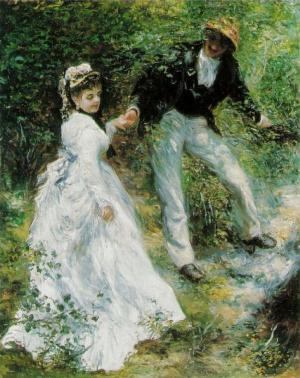A Mechanical Account of Poisons in Several Essays
Nonfiction, Religion & Spirituality, New Age, History, Fiction & Literature| Author: | Richard Mead | ISBN: | 9781465610935 |
| Publisher: | Library of Alexandria | Publication: | March 8, 2015 |
| Imprint: | Language: | English |
| Author: | Richard Mead |
| ISBN: | 9781465610935 |
| Publisher: | Library of Alexandria |
| Publication: | March 8, 2015 |
| Imprint: | |
| Language: | English |
Viper has always been so Notorious for its Venom, that the most remote Antiquity made it an Emblem of what is Hurtful and Destructive. Nay, so terrible was the Nature of these Creatures, that they were very commonly thought to be sent as Executioners of Divine Vengeance upon Mankind for Enormous Crimes, which had escaped the Course of Common Justice. Thus Herodotus and Ælian do both take notice that Adders were sacred among the Ægyptians; that they affirmed of one sort of ’em particularly, that they were made to be Ministers of the Will of the Gods, by averting Evil from Good Men, and punishing the Bad. And Pausanias observes of the Arabians, that they forbore to offer any Violence to the Vipers which were found near to the Balsam-Tree, as reputing ’em Holy. The Footsteps of which Superstition do still remain among these People to this very Day, for Veslingius saw many of ’em take these Creatures into their Houses, feed ’em, and worship them as the Genii of the Place. The same odd Fancy obtains in the East-Indies, for the King of Calicut causes Cottages to be set up for Serpents to keep them from the Rain, and makes it Death to any that shall hurt one of ’em; thinking them to be Heavenly Spirits, because they can so suddenly Kill Men. A Remarkable Instance of such an Opinion as this we have in the History of St. Paul, whom the People of Malta when they saw the Viper leap upon his Hand, presently concluded to be a Murderer, and as readily made a God of him, when instead of having his Hand Inflamed, or falling down Dead, (one or other of which is usually the Effect of those Bites) he without any harm shook the Beast into the Fire. It being Obvious enough to imagine, that He must stand in a near Relation at least to the Gods themselves, who could thus Command the Messengers of their Vengeance, and Counterwork the Effects of such powerful Agents. And this, after the many Conjectures upon the Matter, seems to be the true Reason why Antiquity not only Represented the First Masters of Physick, Hermes, Æsculapius, Hippocrates, &c. in their Statues and Medals, with a Viper added to their Figure, but also Worshipped them under this Form, for Diseases in those Days, especially the most Violent, Plagues, Fevers, &c. were in like manner, as these Creatures, reputed the Commission’d Messengers of Divine Anger and Displeasure. They therefore who by their Art could Cure and Stop the Course of these, as they were supposed to do this by the particular Leave and Assistance of Heaven, so had Honours paid to Them accordingly, and this Representation was in the Nature of an Hieroglyphick Character; for as the Learned Spanhem observes, the Viper was a Symbol or Emblem of Divine Power.
Viper has always been so Notorious for its Venom, that the most remote Antiquity made it an Emblem of what is Hurtful and Destructive. Nay, so terrible was the Nature of these Creatures, that they were very commonly thought to be sent as Executioners of Divine Vengeance upon Mankind for Enormous Crimes, which had escaped the Course of Common Justice. Thus Herodotus and Ælian do both take notice that Adders were sacred among the Ægyptians; that they affirmed of one sort of ’em particularly, that they were made to be Ministers of the Will of the Gods, by averting Evil from Good Men, and punishing the Bad. And Pausanias observes of the Arabians, that they forbore to offer any Violence to the Vipers which were found near to the Balsam-Tree, as reputing ’em Holy. The Footsteps of which Superstition do still remain among these People to this very Day, for Veslingius saw many of ’em take these Creatures into their Houses, feed ’em, and worship them as the Genii of the Place. The same odd Fancy obtains in the East-Indies, for the King of Calicut causes Cottages to be set up for Serpents to keep them from the Rain, and makes it Death to any that shall hurt one of ’em; thinking them to be Heavenly Spirits, because they can so suddenly Kill Men. A Remarkable Instance of such an Opinion as this we have in the History of St. Paul, whom the People of Malta when they saw the Viper leap upon his Hand, presently concluded to be a Murderer, and as readily made a God of him, when instead of having his Hand Inflamed, or falling down Dead, (one or other of which is usually the Effect of those Bites) he without any harm shook the Beast into the Fire. It being Obvious enough to imagine, that He must stand in a near Relation at least to the Gods themselves, who could thus Command the Messengers of their Vengeance, and Counterwork the Effects of such powerful Agents. And this, after the many Conjectures upon the Matter, seems to be the true Reason why Antiquity not only Represented the First Masters of Physick, Hermes, Æsculapius, Hippocrates, &c. in their Statues and Medals, with a Viper added to their Figure, but also Worshipped them under this Form, for Diseases in those Days, especially the most Violent, Plagues, Fevers, &c. were in like manner, as these Creatures, reputed the Commission’d Messengers of Divine Anger and Displeasure. They therefore who by their Art could Cure and Stop the Course of these, as they were supposed to do this by the particular Leave and Assistance of Heaven, so had Honours paid to Them accordingly, and this Representation was in the Nature of an Hieroglyphick Character; for as the Learned Spanhem observes, the Viper was a Symbol or Emblem of Divine Power.















